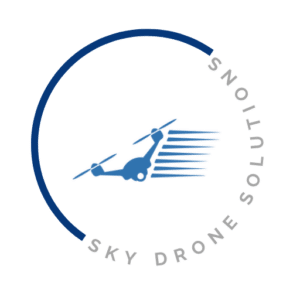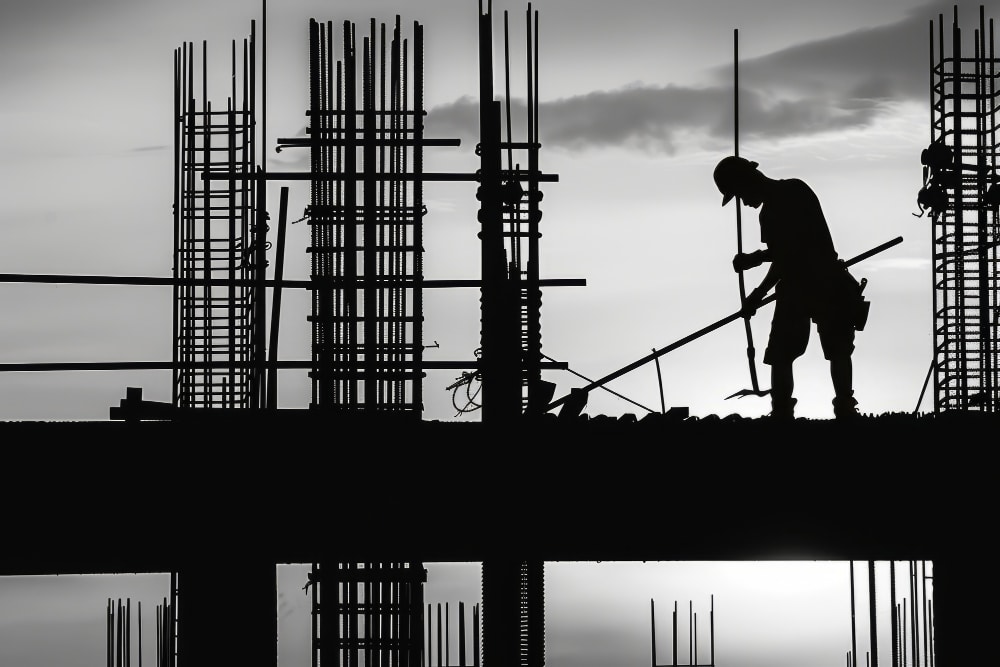Civilian Use of Drones in Disaster Monitoring
Civilian drones have become vital in disaster monitoring, offering unparalleled rapid response and assessment capabilities.
These uncrewed aircraft are eyes in the sky, providing real-time data crucial for disaster relief efforts. In civilian use, drones are instrumental in quickly surveying affected areas, identifying hazards, and supporting search and rescue missions. Surveillance drones with high-resolution cameras and thermal imaging are essential for locating survivors in challenging environments. In addition to disaster response, drones are revolutionizing inspection services for various industries, including construction project.
The versatility of civilian drones in civilian applications cannot be overstated. From natural disasters like earthquakes and hurricanes to artificial crises, these drones are invaluable.
As drones become more advanced, their role in disaster monitoring will continue to expand, solidifying their place as an essential tool for emergency responders. In summary, civilian drone technology has revolutionized disaster monitoring, making it more efficient and effective.
Critical Infrastructure Protection Technology
At Sky Drone Solutions, we specialize in civilian drone technology that significantly enhances infrastructure protection. Civilian drones monitor and maintain critical infrastructure like bridges, power lines, and pipelines. Drones equipped with advanced imaging technology can quickly identify potential issues, reducing the need for manual inspections.
This drone technology ensures vital systems’ ongoing protection and stability. With civilian drone applications in infrastructure protection, organizations can better manage maintenance schedules and respond swiftly to any problems. Utilizing drones for these tasks increases efficiency and enhances safety for workers.
Moreover, civilian drones provide a cost-effective solution for large-scale infrastructure projects, minimizing downtime and preventing costly repairs.
The versatility of civilian drones in this field showcases the significant impact of UAV technology on infrastructure protection.
Federal and FAA Regulations on Civilian Drone Use
Understanding federal and FAA regulations is crucial for using civilian drones. These regulations are designed to ensure safety, protect privacy, and streamline the integration of civilian drones into national airspace.
The Federal Aviation Administration (FAA) mandates critical requirements, such as registering all civilian drones weighing between 0.55 to 55 pounds and adhering to operational guidelines that impact how these drones are used. Compliance with federal law includes restrictions on flying over people, maintaining line-of-sight operations, and observing limits on altitude and speed.
Misuse of civilian drones can lead to severe penalties, including fines and jail time. Privacy also plays a significant role in the policy framework, as federal regulations prohibit drone operations that invade personal privacy without consent.
The aviation agency continues to evolve these policies to address new challenges and technological advancements, ensuring a balanced approach between innovation and regulation.
Sky Drone Solutions emphasizes the importance of adhering to FAA guidelines to maximize drone technology’s benefits and maintain safe skies for everyone.
RAND Studies on Drone Applications
RAND’s extensive studies on drone applications have illuminated many facets of how civilian drones are used for various purposes. Their research and analysis highlight drones’ critical civilian applications to society.
For example, one prominent RAND report delves into civilian drones used for infrastructure monitoring, showcasing how technology enhances public safety and efficiency.
Furthermore, through detailed studies, RAND explores the intersection of drones and policy, assessing how regulations impact the deployment of UAVs in civilian spheres. They also provide insights into how research supports the technological advancements in the drone industry.
By examining civilian drones from multiple perspectives, RAND offers a comprehensive view on how civilian technology integrates into everyday use, shaping both public and private sectors.
Policymakers often rely on these authoritative analyses to craft regulations, ensuring civilian drones are utilized safely and effectively. Overall, RAND’s work underscores the transformative potential of drones, shedding light on their diverse civilian applications and the ongoing evolution of this innovative technology.
Privacy Concerns with Civilian Drones
When discussing the use of civilian drones, one can’t overlook the privacy concerns that arise. Surveillance drones, while beneficial in various civilian applications, bring with them worries about how they might infringe on personal privacy.
The ability of these drones to capture high-resolution images and videos can lead to unauthorized surveillance, raising significant privacy issues.
Even for beneficial civilian drone applications like infrastructure inspections or search and rescue, the potential for misuse can’t be ignored. Why do people hate drones? One reason is the concern about privacy invasion. With more individuals empowered to use drones, the boundary between public surveillance and private lives may blur.
Moreover, as drones become indispensable tools in civilian areas, we must address these privacy concerns proactively.
Regulations need to be implemented to protect privacy rights while allowing for the beneficial uses of these advanced technologies.
At Sky Drone Solutions, we recognize the importance of balancing innovation with privacy and advocate for responsible drone operation that respects individual privacy rights.
Search & Rescue Operations Using Civilian Technology
Search and rescue operations have significantly benefited from advancements in civilian technology, particularly with the integration of civilian drones. Emergency responders increasingly use civilian drones for locating missing persons and assessing hazardous situations from a safe distance.
These drones have advanced imaging tools, such as thermal cameras, which can detect body heat and provide crucial real-time data during operations. In challenging terrains and remote locations, drones offer a rapid response capability that traditional methods simply cannot match.
The versatility of civilian drones has revolutionized search and rescue missions, making them more efficient and effective.
By deploying drones, responders can scout large areas quickly, reducing the time it takes to locate individuals in need. Moreover, these civilian drones can deliver essential supplies, such as water or medical kits, to stranded individuals before human rescuers can reach them.
As technology continues to evolve, the role of civilian drones in search and rescue operations is likely to expand further, solidifying their importance in emergency response scenarios.
Environmental Impact and Pollution Monitoring with Civilian Drones
At Sky Drone Solutions, we’re exploring the remarkable potential of civilian drones in environmental impact and pollution monitoring.
Civilian drone technology, fully integrated with UAV systems, enables real-time data collection on environmental changes. Drones can efficiently monitor air quality and water pollution, providing crucial data to mitigate adverse environmental impacts.
By utilizing civilian applications of drones, organizations can perform extensive ecological impact analysis without the high costs or labor-intensive efforts traditionally associated with such tasks. Civilian drones have advanced sensors, making UAV-enabled pollution monitoring increasingly precise and accessible.
The cost-effectiveness and flexibility drones offer revolutionize the way we approach environmental challenges. As drone technology evolves, the role of civilian drones in monitoring pollutants and analyzing environmental impact becomes ever more critical.
In addition to their ecological benefits, drones help foster awareness and proactive measures against pollution, ensuring a healthier planet for future generations.
Civilian UAV applications will transform environmental monitoring and foster a deeper understanding of planetary health.
Mapping and Surveying
Civilian drones are extensively used in mapping and surveying, providing a revolutionary approach to data collection. With advanced UAV (Unmanned Aerial Vehicle) and UAS (Unmanned Aircraft System) technology, civilian drones offer precise and efficient methods for capturing high-resolution aerial images and geospatial data.
Used in various industries, these drones streamline the process of creating detailed maps and conducting accurate surveys for construction, agriculture, or environmental monitoring.
The aerial perspective of UAVs allows them to cover large areas quickly, making it easier to detect changes in terrain and infrastructure over time. As a result, civilian drones are indispensable tools, used as a crucial part of modern surveying and mapping solutions.
With the ability to gather data in real-time and access hard-to-reach locations, drones ensure that mapping and surveying projects are completed faster, safer, and more cost-effectively than traditional methods.
Recreational Use and Hobbyist Activities
Recreational use and hobbyist activities have surged in popularity with the advent of civilian drones. Hobbyists have embraced drones for various leisurely activities, from capturing breathtaking aerial footage to engaging in thrilling racing competitions.
A civilian drone is not just a tool; it’s a gateway to innovative and exciting recreational pursuits. UAV technology has allowed hobbyists to explore new dimensions of their interests.
Whether used by amateurs or experienced drone pilots, these UAVs open up endless possibilities for entertainment and skill-building. Drones are commonly used in recreational photography, where enthusiasts capture unique perspectives of landscapes and events.
Moreover, civilian drones are instrumental in community activities like drone flying clubs, fostering a social and educational environment for hobbyists. With user-friendly features and advanced capabilities, drones have become integral to recreational activities.
As the technology evolves, the scope of what can be achieved with a civilian drone continues to expand, making it an ever more appealing pursuit for hobbyists eager to explore the skies.
Educational and Research Purposes
Civilian drones are increasingly used for educational and research purposes due to their versatility and cost-effectiveness. Educational institutions utilize civilian drones to enhance STEM learning, providing students with hands-on experience in robotics, programming, and data collection.
For research purposes, drones are invaluable tools in environmental studies, allowing researchers to conduct wildlife monitoring, habitat mapping, and climate analysis from a safe distance.
Civilian drone technology has also been adopted in archaeology for site surveying and agriculture for crop analysis, making data collection more efficient. Universities and research organizations are leveraging civilian applications of drones to push the boundaries of knowledge in various fields.
This broad use of drones in research and education highlights the multifaceted purposes of UAV technology. Whether for advancing scientific research or enriching educational experiences, civilian drones are essential assets.

